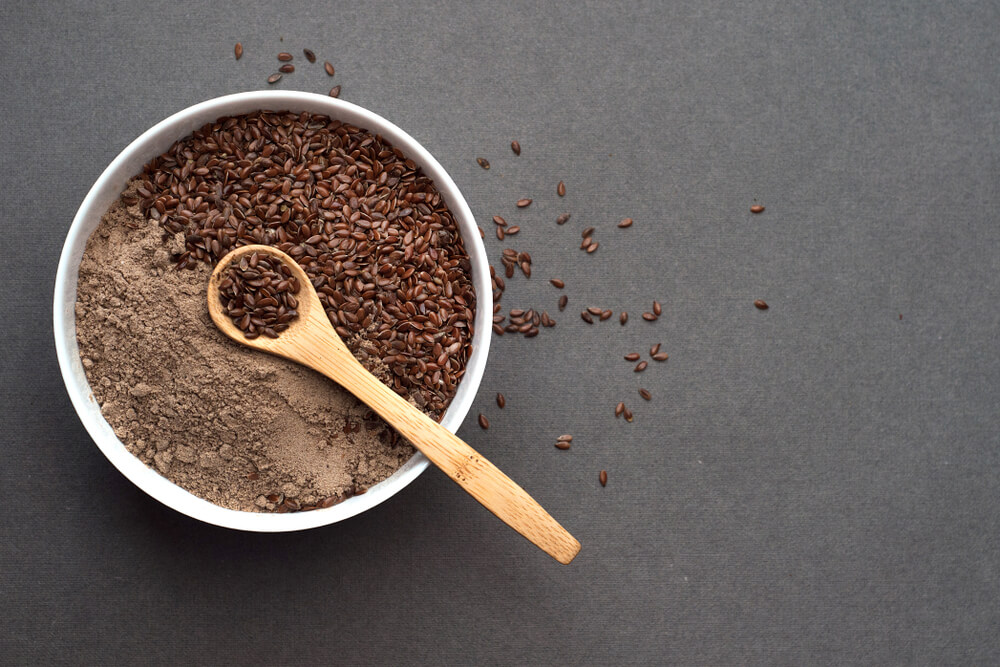Hey Ollie blog readers! We’re offering you an exclusive 60% OFF your starter box! Try now!
With terms like “organic,” “fresh,” and “human-grade” floating around, it can be hard to determine how these diets are different and which options are best for your dog. While organic dog food sounds appealing, the reality is more complex than you might think. Understanding the facts can help you make informed decisions about your dog’s diet and explore healthier alternatives.
The Reality Behind Organic Dog Food Claims
Limited Regulation Creates Consumer Confusion
Unlike organic food for human consumption, organic dog food lacks clear federal standards. While the U.S. Department of Agriculture (USDA) has yet to define “organic” specifically for pet foods, the Association of American Feed Control Officials (AAFCO) sets standards for the National Organic Program (NOP), with individual states responsible for enforcement. This regulatory gap creates inconsistencies in what consumers can expect from organic dog food products.
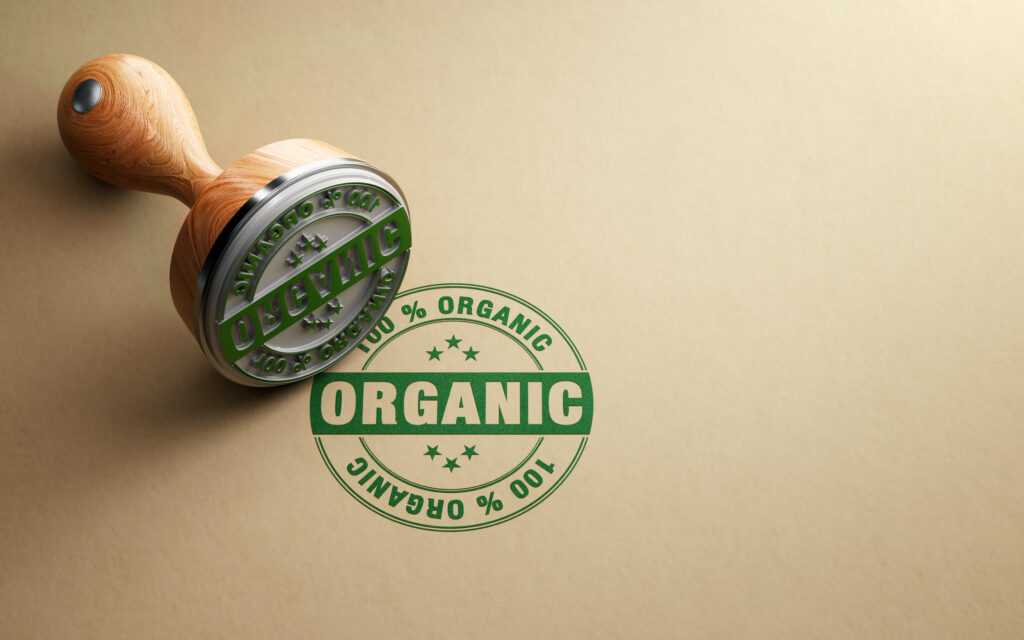
Misleading Labels and Marketing Tactics
Organic labeling in pet food can be deceptive. According to NOP regulations:
- For a product to display the organic seal, at least 95% of ingredients by weight must be organic
- Products labeled “made with organic ingredients” require only 70% organic content
- Some companies claim their food is organic without any regulatory oversight or proof of their claims
This lack of standardization means you may pay premium prices for products that don’t deliver the promised organic benefits.
Organic Doesn’t Always Equal Healthy
Some brands may lack the nutrients dogs need to stay healthy and may require supplementation with key vitamins and minerals. Foods labeled as organic may still undergo heavy processing that strips away nutritional value, making them shelf-stable but less beneficial for your dog’s health.

Better Alternatives: Fresh and Human-Grade Dog Food
The Science Behind Fresh Dog Food Benefits
Recent research reveals compelling reasons to consider fresh dog food over organic alternatives:
Extended Lifespan: According to one study, dogs who were fed a fresh diet lived an average of 13.1 years, while those fed commercial, canned dog food lived an average of 10.4 years. In other words, a fresh food diet could help you and your dog enjoy an additional 2.5 years of love, laughter, and licks.
Superior Digestibility: Dogs absorb nutrients better from fresh food than kibble diets, showing higher digestibility rates for dry matter, organic matter, energy, and fats. Studies show that dogs digest fresh food really well, with absorption rates above 82%, especially when you have proteins and fats.
Reduced Inflammation: Fresh dog food has been linked to reduced inflammation throughout the body. A study examining the effects of mildly cooked human-grade dog food found positive impacts on gene expression related to inflammation markers. This reduction in inflammation can benefit dogs with allergies, skin conditions, and joint problems.
Health Improvements You Can Expect
Pet parents switching to fresh dog food often observe:
- Better Digestive Health: After 14 months, 62% of dogs adhered to the diet, with healthy dogs demonstrating improvements in coat condition (70%), bowel frequency (47%), and weight loss targets (67%). Among dogs with gastrointestinal and dermatological disorders, significant symptom improvement was noted: 95% for chronic enteropathy, 83% for dermatological conditions, and 100% for cases with both disorders.
- Enhanced Cognitive Function: According to a Journal of Veterinary Medicine study, cognitively impaired senior dogs who were fed an antioxidant-enriched diet had higher levels of brain-derived neurotrophic factors, which may slow cognitive decline.
- Disease Prevention: A Journal of the American Veterinary Medical Association (JAVMA) study reported that Scottish terriers who consumed green, leafy, and yellow-orange vegetables three times a week had lower urinary bladder carcinoma rates than their counterparts who did not eat vegetables.
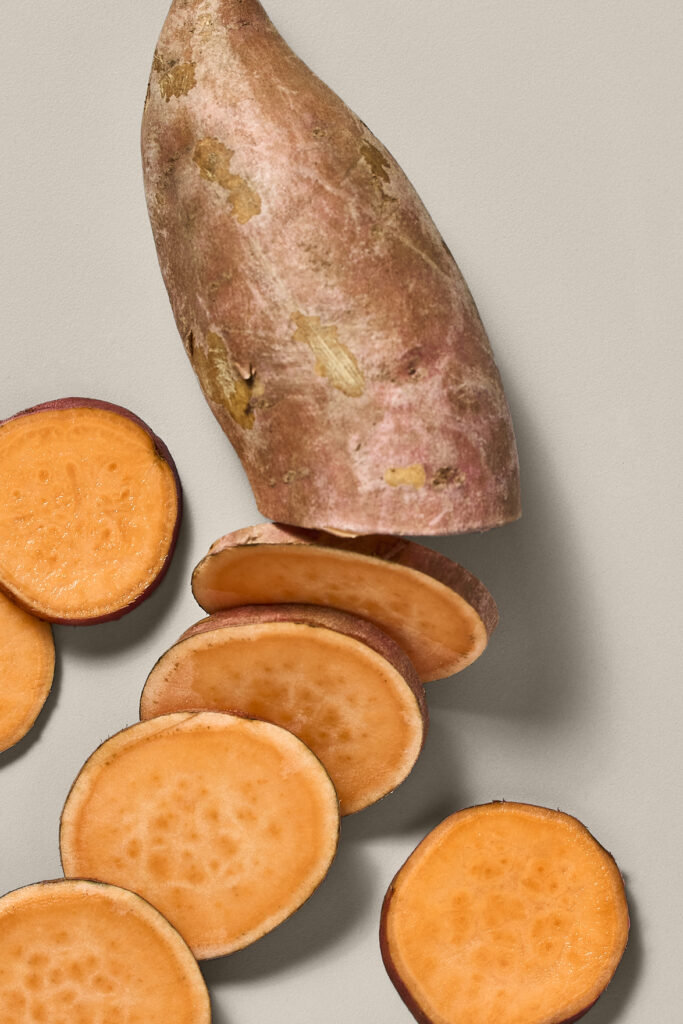
Key Ingredients for Optimal Canine Health
When evaluating dog food options, prioritize these essential components:
High-Quality Protein Sources
- Whole meats (chicken, beef, lamb, fish, turkey) as the primary ingredient
- Avoid plant-based proteins and by-product meals
- Look for human-grade protein sources
Beneficial Fats and Oils
- Animal fat and fish oil for omega-3 and omega-6 fatty acids
- Flaxseed oil and eggs for additional healthy fats
- These support coat health, brain function, and overall wellness
Nutrient-Dense Carbohydrates
- Fruits and vegetables: spinach, kale, blueberries, sweet potatoes, carrots
- Whole grains: brown rice, oatmeal, barley, quinoa (unless your dog has grain sensitivities)
- These provide energy, fiber, and essential vitamins and minerals
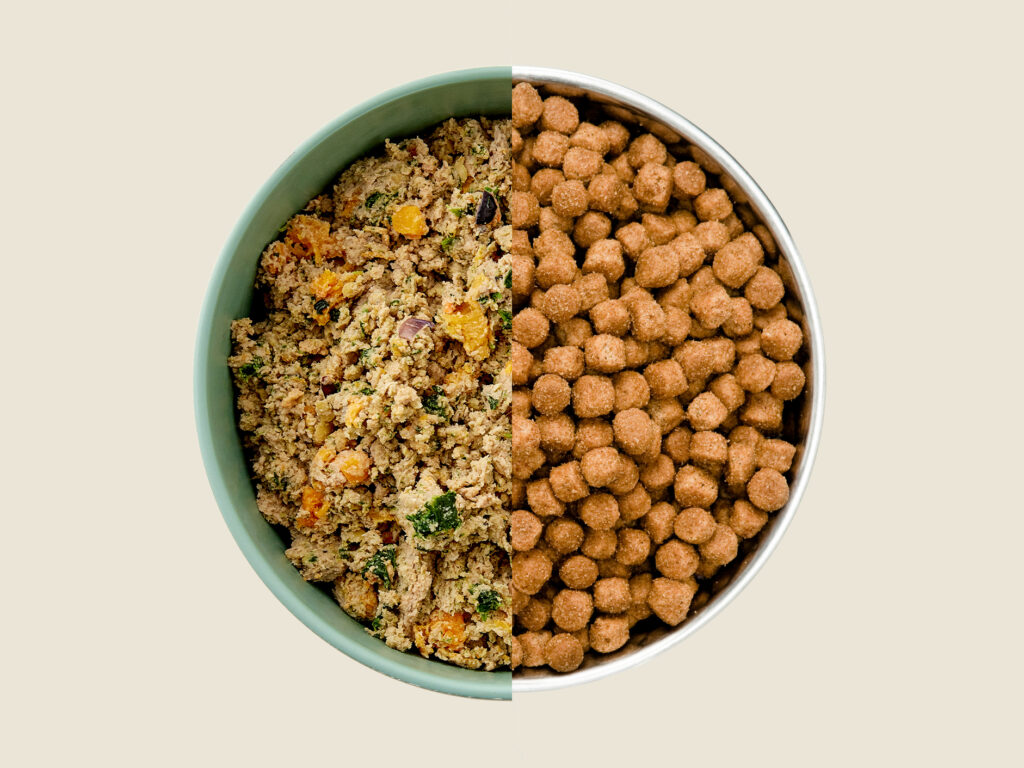
Fresh Dog Food vs. Traditional Options
Cost Considerations and Value
Fresh dog food typically costs about $1.40 per 100 calories of food. Comparatively, dry dog food costs about 25 cents per 100 calories, while canned dog food costs about $1.10 per 100 calories.
While fresh food requires a higher initial investment, many pet parents find the health benefits justify the cost through:
- Reduced veterinary bills
- Better quality of life for their dogs
- Potential for extended lifespan
Addressing Common Concerns
Is fresh food suitable for all dogs? Fresh dog food is minimally processed and highly digestible; it may benefit dogs who have sensitive stomachs, picky appetites, or food allergies. Fresh food may not be suitable for dogs with certain medical conditions or decreased immune function.
Nutritional completeness: Fresh dog food can be nutritionally equivalent to kibble if it’s made by a reputable company that relies on a veterinary nutritionist to develop its diets.
Making the Switch: Best Practices
Gradual Transition Protocol
- Start with 25% fresh food mixed with 75% current diet
- Gradually increase fresh food portion over 7-10 days
- Monitor your dog’s response and adjust as needed
- Consult your veterinarian before making significant dietary changes
Choosing a Fresh Dog Food Provider
Look for companies that offer:
- Veterinary nutritionist formulation
- Human-grade ingredients
- Transparent sourcing and manufacturing
- Personalized meal plans based on your dog’s specific needs
- Fresh dog food delivery services for convenience
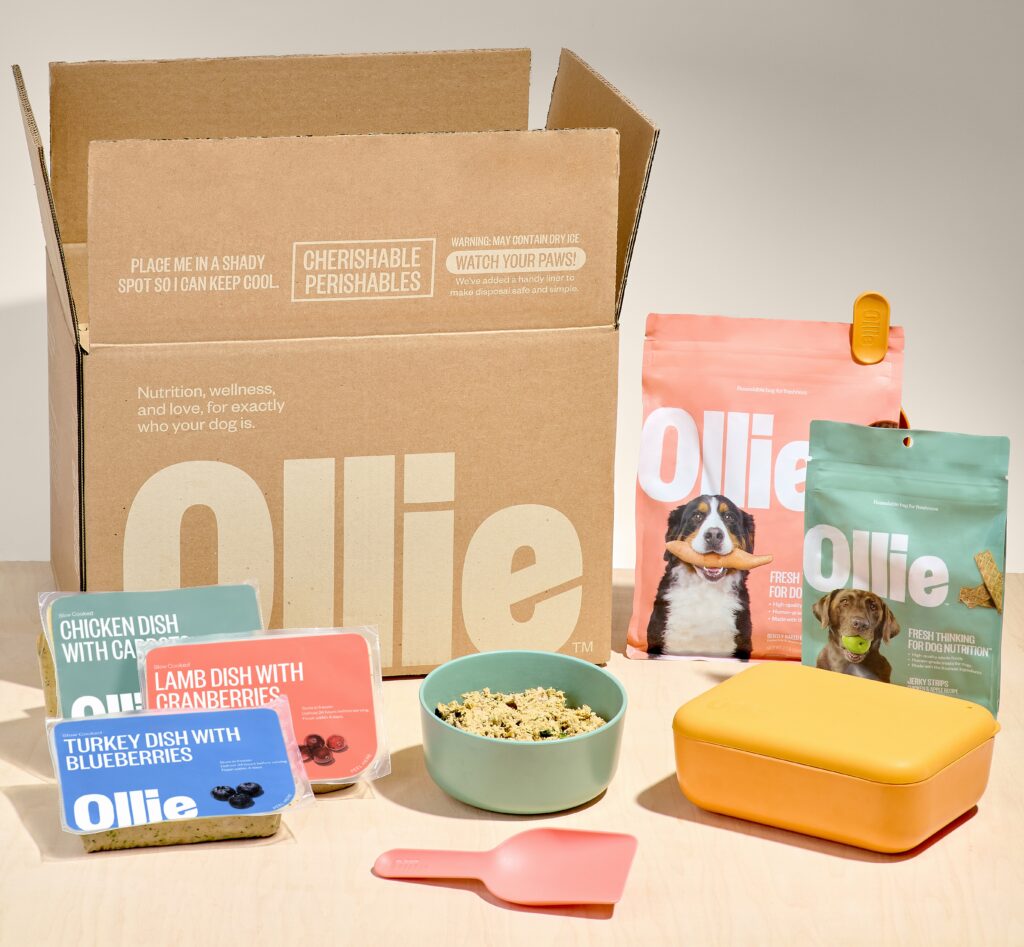
Why Ollie Stands Out in Fresh Dog Food
At Ollie, we address the shortcomings of organic dog food by providing truly beneficial alternatives. Our fresh dog food delivery service offers:
- Human-grade ingredients prepared in USDA-certified kitchens
- Vet-formulated recipes that meet AAFCO nutritional standards
- Personalized meal plans tailored to your dog’s age, weight, breed, and health needs
- Complete transparency about ingredients and sourcing
- Convenient delivery with flexible scheduling
Our approach combines the freshness you want with the nutritional science your dog needs, making it easier than ever to provide optimal nutrition.
Ready to give your dog the nutrition they deserve? Discover how Ollie’s fresh, human-grade dog food can transform your pup’s health and vitality. Visit myollie.com to create a personalized meal plan and start your dog’s journey to better health today.
Frequently Asked Questions
Q: Is fresh dog food better than organic dog food? A: Fresh dog food typically offers superior nutritional benefits compared to organic options. While organic focuses on ingredient sourcing, fresh food emphasizes minimal processing, higher digestibility, and proven health outcomes.
Q: How do I know if fresh dog food is right for my dog? A: Fresh food benefits most dogs, especially those with sensitive stomachs, allergies, or picky eating habits. Consult your veterinarian to determine if fresh food aligns with your dog’s specific health needs.
Q: Can I mix fresh food with kibble? A: Yes, even adding just 20% fresh food to a dog’s diet can lead to significant health improvements. This approach allows you to introduce fresh food benefits while managing costs.
Q: How long does it take to see improvements after switching? A: Many pet parents notice changes in coat condition, energy levels, and digestion within 2-4 weeks of switching to fresh food.
Q: Are there any risks associated with fresh dog food? A: When properly formulated by veterinary nutritionists and sourced from reputable companies, fresh dog food is safe and beneficial. Choose established brands that follow food safety protocols and provide complete nutrition.
Tagged As:

The nutrition your dog needs,
the food they want.

Enjoying our articles? Subscribe our Newsletters and get new articles directly to your inbox
You might also like
18 September 2025
6 MINS READ
Can Dogs Eat Flaxseed? Is Flaxseed Safe For Dogs?
Wondering if flaxseed is safe for your dog? This guide breaks down the benefits, risks, and best ways to add flaxseed, or flaxseed oil, to your pup’s diet.
18 September 2025
6 MINS READ
Why is My Dog Not Eating But Acting Normal? Causes & What To Do
Worried your dog isn’t eating but still acting normal? Here’s what could be going on and what to do to help your pup get their appetite back.
18 September 2025
5 MINS READ
Can Dogs Eat Crab? Is Crab Meat Safe For Dogs?
Thinking about giving your dog crab meat? Find out if it’s safe, what risks to watch for, and when crab might do more harm than good.





